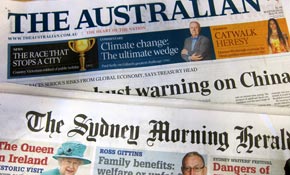
Media buyers are embracing the new emma measuring methodology, which has been launched by publishers, and which measures readership rather than circulation.
As media circulations tumble, there is contention about the best way to measure the scale of its decline and its value to advertisers.
While printers are most interested in the number of printed copies magazines and newspapers are selling, readership is the most important metric to media buyers and advertisers as they try to maximise the number of eyeballs they reach.
David Lodge, group business director of media agency TMS, says: “Readership is the truer measure and the key to reaching our targets, but it and circulation are joined at the hip."
Other media buyers like Starcom chief executive Chris Nolan still put significant value on circulation however, saying while readership is more important, circulation gives him additional information about how audiences consume print.
“The relationship between circulation and print gives us an idea of how much a newspaper or magazine is passed around, and we might place a higher value on the primary reader who bought the copy as they tend to read deeper,” he says.
[Related: Newspapers in flux]
The media industry has long relied on Roy Morgan surveys to measure readership numbers, however, publishers and industry bodies have recently developed Enhanced Media Metrics Australia (emma) to measure newspaper and magazine readership using different methodology with sometimes wildly varying results to Roy Morgan and Australian Bureau of Circulation figures.
The most notable example is where the latest emma six-monthly print readership gave the Daily Telegraph 54 per cent more readers over the year than the Roy Morgan results.
The Newspaper Works chief executive Mark Hollands says the discrepancies are the result of emma’s ‘superior methodology’ that asks respondents what media they consumed in the past 24 hours, which he says is industry best practice, instead of the previous week like other systems.
“It’s hardly surprising that people better remember what they read on a Monday or Tuesday than if they are asked on a weekend what they read the whole week,” he says.
Lodge agrees, saying emma is ‘vastly superior in the way it collects data’.
“It has clear strengths, in particular the ability to marry metrics cross channel showing audience reach for mastheads across print and digital,” he says.
“Most interesting is that it provides data for regional and community titles that we never had, so we can now create total plans for the whole country.”
“The industry will more and more be quoting emma to clients and the publications are pro-emma since they funded it. It depends what their clients want and what software packages they are using.”
Lodge says many media buyers are likely to transition to the new methodology but it will take some time as they have to explain it to their clients and wait until it has at least a full year of data before it is properly comparable to other systems and circulation figures.
“Media buyers now have an unprecedented number of data sources with which to assess print,” he says.
“The history of the Roy Morgan metric and the ability to align changes in its readership to circulation is its current obvious advantage.”
He says TMS will be talking to its clients about reach that can be achieved through print as reported by both Roy Morgan and emma in the short to mid-term as to give the fullest account of what its campaigns will achieve.
Nolan says his agency is in the midst of a six-month trial of emma data to assess its strength and ability to mesh with their systems.
He says Starcom is likely to run both emma and Roy Morgan concurrently as the latter gives different types of data, though it will depend on both systems’ eventual offerings.
“Print has been in significant decline in recent years so I guess that’s why the media industry has been motivated to come up with a different methodology,” he says.
He says his agency is seeing a shift away from print advertising into other forms of media.
Lodge says TMS is also seeing that movement so emma’s digital readership figures are becoming more important.
“Press advertising has decreased and expenditure in online has dramatically increased, taking revenue that in the past that would have gone to print,” he says.
“This is the reason why it is so important for the newspaper industry to show the reach of their mastheads across print and digital.”
While this may not be welcome news for printers seeing circulations and advertising pages disappear, Hollands says the value of digital sales and readership should not be understated as both print and online editions support each other and help circulation.
Comment below to have your say on this story.
If you have a news story or tip-off, get in touch at editorial@sprinter.com.au.
Sign up to the Sprinter newsletter
